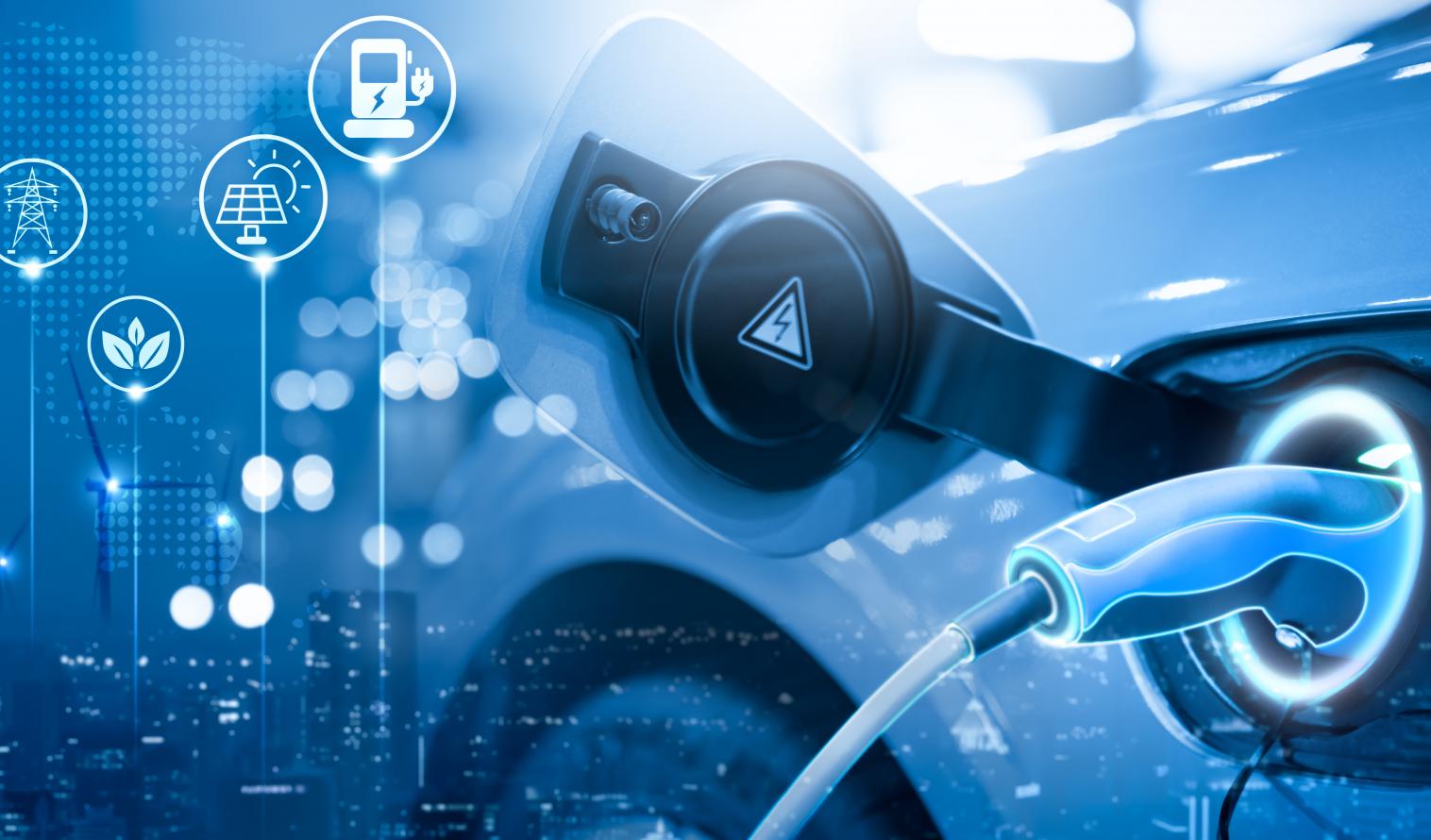Titel
The challenge of charging infrastructure – farewell to the plug-in hybrid
Episode 2: Radical restructuring is necessary.
An interview by Evelyn Stahl, Divisional Communicator for Society, Innovation, Technology
The future of mobility
In a short series, DLR Projektträger experts Dr Jens Erler, Dr Tania Hancke and Jenny von Wnuck Lipinski shed light on the trends surrounding the energy and transport transition.
Episode 1: Thinking energy and transport together
Episode 2: The challenge of charging infrastructure – farewell to the plug-in hybrid
Episode 3: Transport transition in urban and rural areas (from the 20th September)
Evelyn Stahl: By 2030, what are now 600,000 purely electrically driven vehicles in Germany are to become up to ten million. The prerequisite for this is a nationwide charging infrastructure. Is it currently expanding fast enough?
Jens Erler: There is already a well-developed charging infrastructure that supplies our current vehicles. But in the future, the whole thing will have to be multiplied. Currently, it is not always economical for providers to offer charging infrastructure, so they are cautious about expanding it. This is also due to uncertainties regarding future standards and norms for the infrastructure. The providers naturally want to position themselves as future-proof as possible.
Jenny von Wnuck Lipinski: In addition to technical standardisation, user-friendliness plays a major role. Customers should not have to stand at the charging station and first figure out how charging works. In the unIT-e² project, which is run by the Federal Ministry of Economics and Climate Protection (BMWK), and which we support, 26 partners across all industry structures are trying to find common standards.
Jens Erler: Many standards that have already been considered have not yet been finalised. Politics must create clear legal requirements here. For example, it must be clarified which payment methods will be required in the future and whether a display must be built into the column. As long as this is unclear, the smaller providers cannot be certain whether an investment is worthwhile now. At the same time, it can be observed that some large players such as EnBW are in the process of creating industry standards, e.g. for fast-charging stations.
Politics must define a clear legal framework for the future charging infrastructure and support the creation of new norms and standards.

The future of charging is flexible
Evelyn Stahl: What will that look like in practice at the charging station? How much time must you allow on site for fully charging the battery?
Tania Hancke: The target vision is fast charging in ten minutes. The whole process should take hardly any longer than conventional refuelling. Up to now, you have to go into the petrol station after filling up, queue up and pay. With the charging station, on the other hand, I hold the card on, pull out the plug after a few minutes – and that's it. So all in all, it takes the same amount of time.
Jens Erler: DLR Projektträger, for example, is in charge of the ultraBatt project funded by the BMWK, in which batteries are prepared to accept a high charging power without ageing prematurely. For it is not enough to build powerful charging stations – the car must also be able to absorb high charging power. Currently, no car on the market can use to the full the maximum charging power of the combined charging standard CCS, which some charging stations can already provide.
The target vision is fast charging in ten minutes. The whole process should take hardly any longer than conventional refuelling.

Tania Hancke: One real model for the future is so-called large charging parks or smaller charging hubs, where waiting time can be combined with a coffee in a nice atmosphere – if possible with weather protection. Sanitary facilities included, of course. If this charging park is also built near a wind turbine or has its own photovoltaic system with storage, there will be no need to transport the electricity via the grid. We call this grid efficiency.
Jens Erler: Short transport routes reduce the need for grid expansion and the tax burden. The charging electricity can thus be offered at a lower price. But there are many other charging concepts that do not yet exist today and that will become relevant. Refuelling is only possible at petrol stations, while charging can be carried out in a charging park, at home, at work, in a supermarket car park, in a multi-storey car park, at the roadside or even inductively while driving.
Plug-in hybrid cars offer no advantages
Evelyn Stahl: In the EU, there is the Fit for 55 package of measures, according to which greenhouse gas emissions must be reduced by at least 55 per cent by 2030 compared to 1990 levels. From 2035 onwards, all newly sold light commercial vehicles and passenger cars may therefore no longer be powered, even proportionally, by a conventional combustion engine. What role do hybrid drive concepts play in this calculation?
Tania Hancke: If plug-in hybrids are to be subsidised today, they must be able to drive at least 60 kilometres on electricity. Higher ranges are achieved via the petrol engine. Basically, the combination does not make sense in terms of the CO2 balance of the individual vehicle. In addition to the conventional drive, the weight of the electric drivetrain is also driven around. This makes the vehicles heavier than those with pure combustion engines.
Jenny von Wnuck Lipinski: For manufacturers who have to meet certain CO2 targets with their new car fleets, plug-in hybrid vehicles are currently attractive because they are included in the overall fleet calculation with "supercredits", so-called multipliers, on the CO2 fleet values and thus dress up the overall statistics. It is assumed that the hybrids are predominantly operated in electric mode.
Customers should not have to stand at the charging station and first figure out how charging works.

Tania Hancke: In reality, hybrid vehicles produce more CO2 CO2 than pure combustion engines, because they are predominantly operated in combustion mode – for company vehicles, this is about 85 per cent – and then emit double to four times the CO2stated for them. At least the members of the EU Parliament decided this year to put a stop to the registration of new combustion vehicles from 2035. Many carmakers have decided on more far-reaching voluntary commitments for individual brands. The Jaguar brand of the Indian manufacturer Tata or Lancia under the Stellantis umbrella have announced that they will only bring fully electric vehicles onto the market from 2024. In Germany, this has so far applied to the brands Audi from 2026 and Opel from 2028.